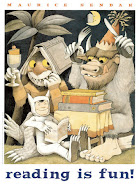
We'll go from best to worst here. Alexa is a comic book (or graphic novel if you are under 35), I read the first 3 episodes, and it was quite interesting till the last few pages of episode 3 where it went all obvious and ordinary. Though perhaps I should mention this is the first graphic novel I have read in 20 years or so. Alexa is a comic book artist who objects to the normal depiction of females in graphic novels by wearing skintight jeans and skivvy. This comic is drawn by males, what a surprise.
Behold, a Mystery! by Joan Smith is a Regency romance cum mystery, quite competent (usually they are abysmal) though I skipped a few boring bits. I was only mildly interested in who done it and who the heroine would marry.
The Wish List by Eoin Colfer had a strange view of goodness, in fact a perfectly pukable view of goodness. The heroine's good deeds and bad deeds are perfectly balanced when she dies (this Ancient Egyptian theology is presented as Christian, the Pope and Martin Luther are both sobbing into their soup) so she is sent back to overbalance the scale one way or the other, by helping someone else achieve their wishes. A kiss in a television studio between two elderly people who regret not kissing in their youth is described as a moment of pure goodness (getting there has needed some deception and manipulation), complete with ethereal light. On the other hand, what seemed to me truly a moment of pure goodness later in the book, where someone asks for and receives forgiveness, in the ordinary difficult way, passed without such light. I have not read a decent story ever about someone coming back after death to fix things, they are all revoltingly sentimental at the least.
The Wish List by Eoin Colfer had a strange view of goodness, in fact a perfectly pukable view of goodness. The heroine's good deeds and bad deeds are perfectly balanced when she dies (this Ancient Egyptian theology is presented as Christian, the Pope and Martin Luther are both sobbing into their soup) so she is sent back to overbalance the scale one way or the other, by helping someone else achieve their wishes. A kiss in a television studio between two elderly people who regret not kissing in their youth is described as a moment of pure goodness (getting there has needed some deception and manipulation), complete with ethereal light. On the other hand, what seemed to me truly a moment of pure goodness later in the book, where someone asks for and receives forgiveness, in the ordinary difficult way, passed without such light. I have not read a decent story ever about someone coming back after death to fix things, they are all revoltingly sentimental at the least.
Alexa (story by Stan Lee words by Steven Roman, pictures by 8 blokes and 3 women, the women did the colouring in and the lettering) first published 2005; Behold a Mystery! first published 1994, The Wish List first published 2000.














